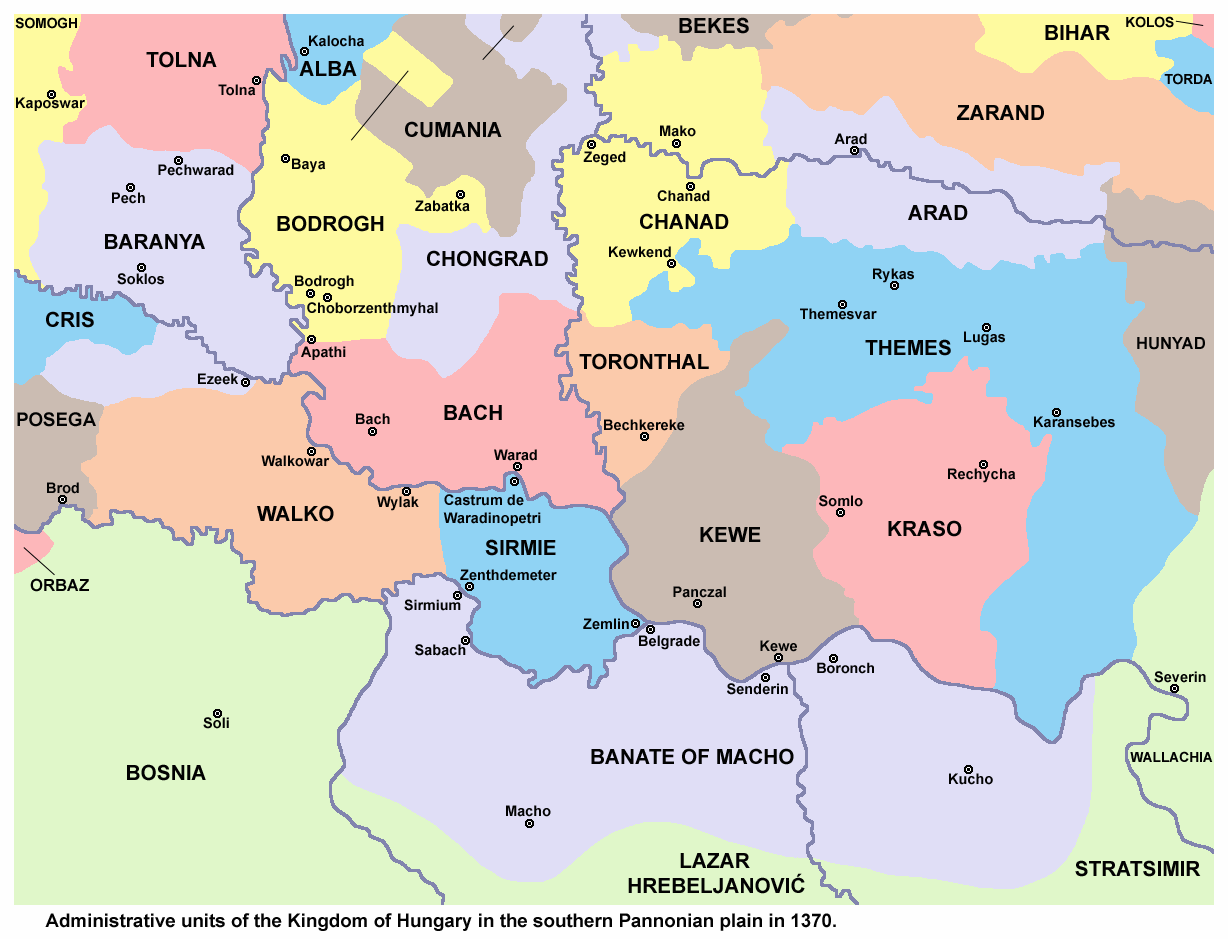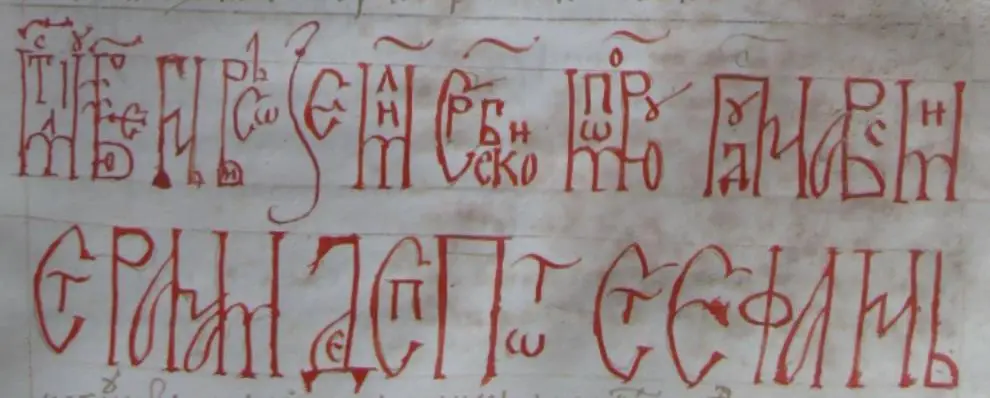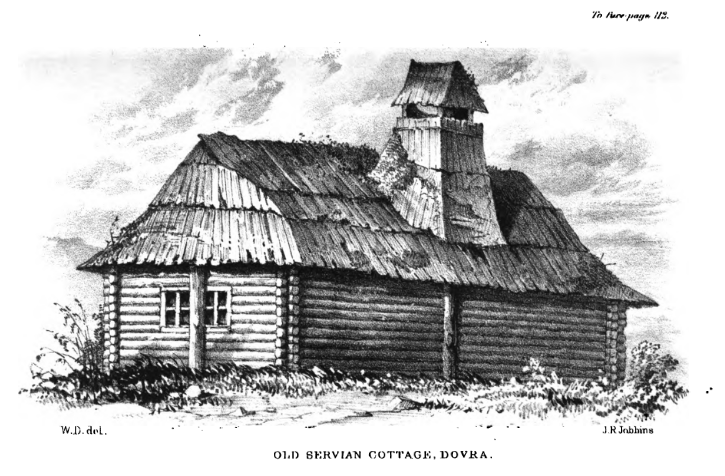In 1938, I came to Belgrade where I lived continuously until this war. Initially, I worked selling various items on the streets, and later I got a job as an office assistant at the Central Transport Society in Belgrade, Kolarčeva Street No. 1. On the day of the bombing,1 I was in Belgrade, so on the same day, I went to my command post in Sisak according to the war schedule. There, I reported to the commander of the 44th Infantry Regiment Reserve. The regiment received orders to go to Slavonia. From there, we went to a position in a village near Požega.2
I don’t remember the exact date, but I think it was around April 17th or 18th. The company commander called all the soldiers and told us that the war had ended, and that everyone could go home. I walked from Požega to my house in Bosanski Novi with some of my friends. I arrived home around April 24th. I stayed at home for only 8 days, and then I received a call from the military command in Petrinja to report immediately to the Military District in Petrinja. Upon reporting, I was immediately given a uniform and stayed there in the barracks for one month, where we conducted military exercises according to the new rules.3
In early June, my company received orders to go to Glina, to establish law and order in the Glina district and to collect all weapons and ammunition from the people. Before departure, our commander, Josip Dobrić, a captain born in Split, who was a teacher by profession, gathered the entire company and ordered us to conduct searches at all houses and premises along the routes we would take, regardless of whether they belonged to Orthodox or Catholic households. He also instructed us that we were authorized to kill anyone who resisted us. Upon arriving in Glina, we first conducted searches of buildings, and then proceeded to nearby villages.
This search lasted about 15 days. When the search was completed, the Ustašas from Zagreb and Petrinja arrived, and then we received orders to gather all Orthodox men aged 20 to 45 according to the lists. During this gathering in the village of Čemernica, one Orthodox man resisted and shot at us. At that moment, he wounded one of my comrades with a rifle, so I used my weapon and killed him. I don’t remember the name of the man I killed. Therefore, we only made arrests of men. We gathered them according to the lists and brought them to Glina, where we left them in the courthouse jail. They all remained in jail for several days until the jail was filled, and then they were killed. Killing was carried out in various ways.
Some were imprisoned in the Orthodox church in Glina.4 The church could accommodate about 1,000 people. The company commander would appoint 15 men to carry out the slaughter. Before they went on this mission, they were given alcoholic drinks such as rum or strong rakija,5 and when they were intoxicated, they were sent inside with knives. Guards were posted outside the church during the slaughter. This was necessary because some Orthodox people climbed into the belfry and then jumped from the belfry into the courtyard. All these jumpers were killed by guards in the courtyard. I was appointed three times to carry out the slaughter in the church. On each occasion, some officers went with us, including Dobrić Josip and Cvijetković Mihajlo, as well as some Ustaša officers. Upon entering the church, the officers stayed at the door and watched our work, while we carried out the slaughter.
The killing was carried out in the following manner: some were stabbed in the heart with a knife, some were slaughtered over the neck, and some were stabbed wherever we could. If a Serbian person wasn’t fatally wounded by the first strike, the Ustaša would finish them off with a knife.
During this slaughter, there was no light in the church; instead, special soldiers were designated to hold battery-powered electric lamps to illuminate the area for us. On several occasions, a Serb would rush at us with fists or kick us in the stomach, but they were immediately butchered. There was a great uproar in the church during this slaughter.
The present Serbs shouted: Long live King Petar, long live Yugoslavia, long live Queen Marija, long live Serbia, long live the Serbs, down with Pavelić,6 down with the Ustašas, down with the Croatian state. All slaughters began in the evening at 22:00 and lasted until 02:00 in the morning. These manifestations continued until the last person was alive. This kind of slaughter in the church occurred 7-8 times, and I participated three times. During this slaughter, we were always covered in so much blood that our uniforms couldn’t be cleaned; instead, we replaced them with new ones from the warehouse and later washed them.
After each slaughter, the church was cleaned. When the slaughter was finished, trucks would come to carry away the corpses. Usually, they were thrown into the Glina River, and some… (due to document damage, the text is unreadable). Some Orthodox were taken out of prison and brought to the banks of the Glina River where they were shot with machine guns. This shooting was done in groups of 300-400 people at a time. They were all lined up in two rows along the shore, tied together with a stick holding each other’s hands, and while standing, the Ustašas slaughtered them, while we provided security for the site.
The bodies of those shot on the shore were thrown into the Glina River. Some groups of Serbs were taken out of prison and 2 See doc. No. 212. shot near a grove near Glina, and then buried where they were shot. The gathering of Serbs was done in the following way: about 70 Ustasšas and about 30 of us soldiers, all under the command of Ustaša officers, would go to a designated village. The village was always first surrounded, and then a specified group would enter to gather the Serbs.
Once the entire village was gathered, we would escort them all under guard to the courthouse jail in Glina. Initially, only men were brought, but later it was arranged to bring female individuals aged 15-50 as well.
During this gathering, I witnessed on several occasions that Ustašas, as well as some of my fellow soldiers, raped women and girls, and then took them to Glina. In Glina, these women were placed in the courthouse jail, then transferred to some requisitioned houses where a camp was set up. They stayed here for 8-10 days, and then they were allowed to go home.
I saw that some Ustašas, as well as soldiers, would come to the camp at night and take the women they desired, then they would rape them somewhere on the outskirts of the city, and then return them to the camp. This was not prohibited by the officers, and the officers themselves did this. My company had the task of gathering Serbs in Glina in the Glina district, and it was ordered that all Serbs from the districts of Topusko, Vrgin Most, and Glina should be gathered in Glina and executed there. I don’t know exactly how many Serbs were killed, but I heard among my comrades that around 120,000 Serbs from the aforementioned districts were killed in Glina.
During the gathering of Serbs, most of them fled into the woods with weapons. They are still in Petrova Gora to this day. Once, the Ustašas went to catch them, but the Serbs resisted and fought them off. Around August 20, 1941, a proclamation was issued calling on all Serbs to return to their homes and jobs, and then we received orders not to touch or attack anyone. Anyone who did so would be subject to military tribunal.
I remained in Glina until September 5 of that year, when I was discharged because other soldiers were called for training. I traveled from Glina to Belgrade with the intention of returning to my old job, but I was arrested by the police. That’s all I have to say on the matter, and the record was read to me, accurately reflecting all my words.
I am literate, (signature) Hilmija Berberović
Source: Vojni arhiv, Arhiva vlade Milana Nedića, k. 43-a, 32/1-II. (Military Archive, Archive of the Milan Nedić government, box 43-a, 32/1-II.)
Translated by Books of Jeremiah
- Tran. note: 06. April 1941. ↩︎
- Tran. note: Požega in Slavonia, Croatia. Not to be confused with Požega in western Serbia. ↩︎
- Tran. note: this means that Berberović served in the regular armed forces (Domobrans) of the Independent State of Croatia, not as an Ustaša. German equivalent would be serving in the Wehrmacht and not the SS. ↩︎
- Tran. note: The church was a prominent cultural hub, where the melody to the current Croatian anthem was first performed, after it was composed by a Serb. It no longer exists, as it was destroyed shortly after the massacres. A joint ossuary was built in 1951 and a memorial house in the 1960s, but the house was repurposed after Operation “Storm” and expulsion of Serbs in 1995. It is now the Croatian House (Hrvatski Dom) in Glina. ↩︎
- Tran. note: alcoholic drink made from fermenting and distilling fruit. Most commonly made from plums, but anything with a sugar content can be used. ↩︎
- Tran. note: Ante Pavelić, the Poglavnik of the Independent State of Croatia and leader of the Ustašas until his death in 1959. ↩︎



